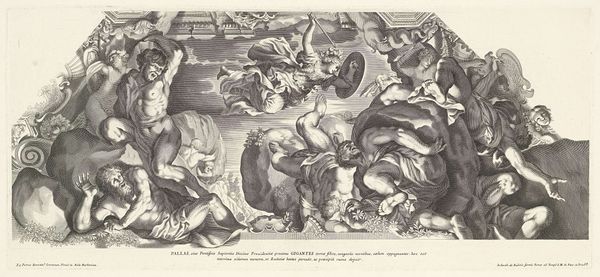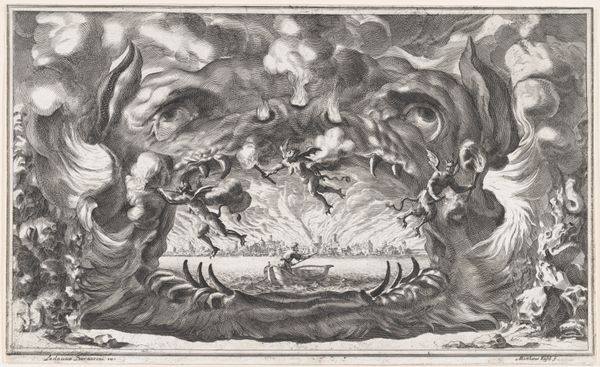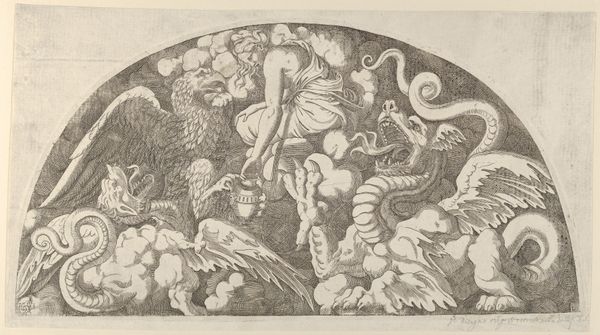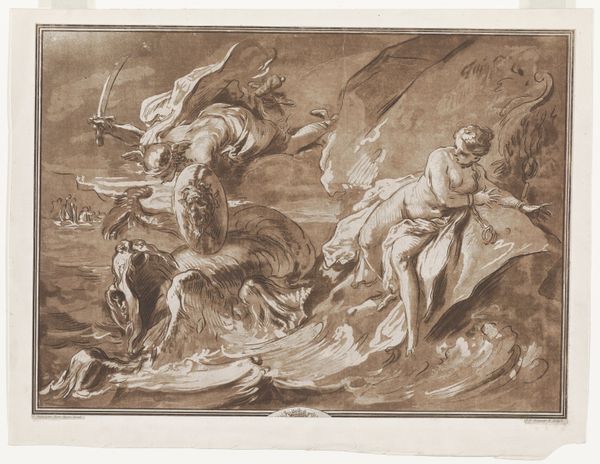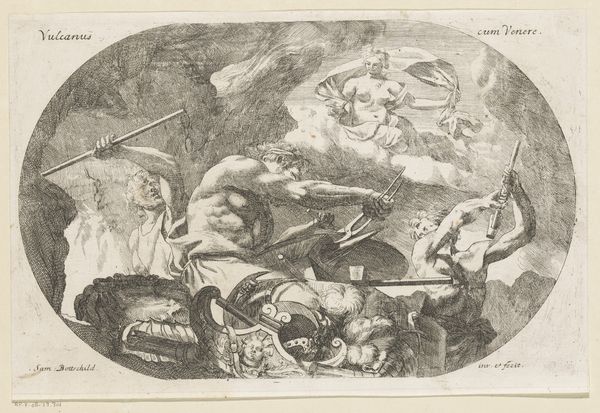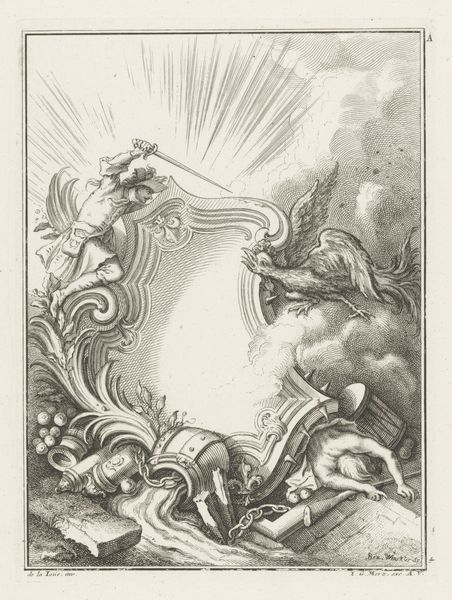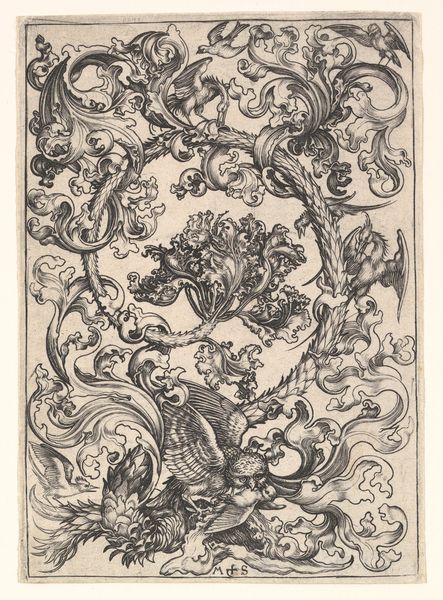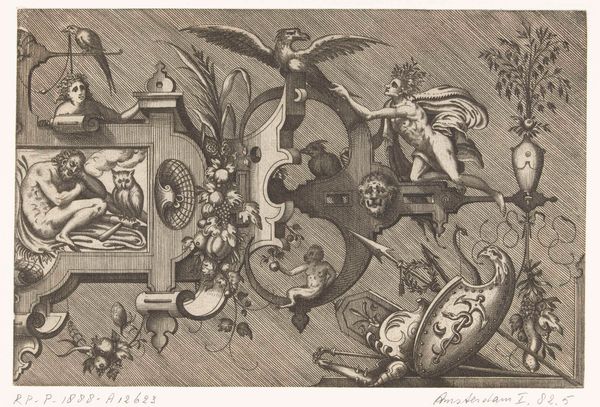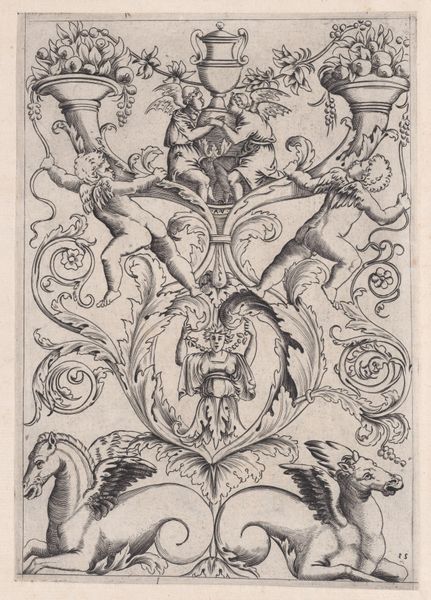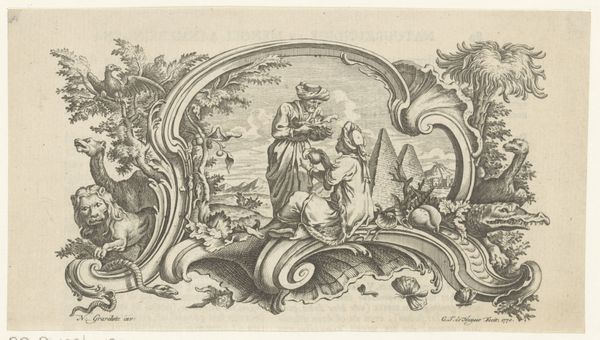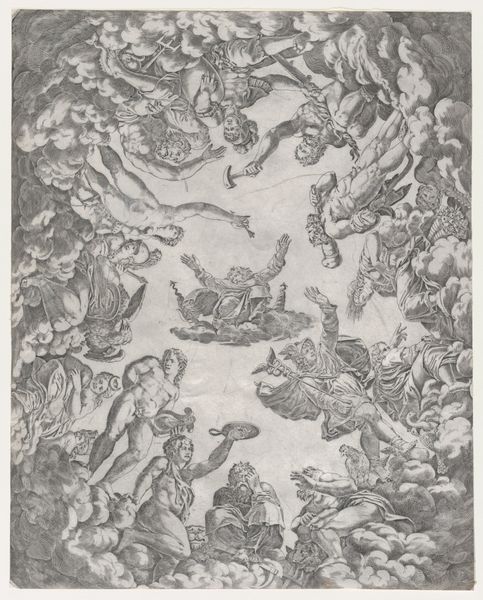
Apotheosis of James I, with the king seated at the bottom, an eagle below him, two angels holding a laurel above him, surrounded by putti 1634 - 1671
0:00
0:00
drawing, print, engraving
#
drawing
#
allegory
#
baroque
# print
#
figuration
#
history-painting
#
engraving
#
angel
Dimensions: Sheet (Trimmed): 12 1/16 × 7 15/16 in. (30.6 × 20.1 cm)
Copyright: Public Domain
Curator: Let’s take a look at "Apotheosis of James I," a print made sometime between 1634 and 1671, by Lucas Vorsterman II. The work currently resides here at the Metropolitan Museum. Editor: Apotheosis, huh? Sounds grand! I'm getting a feeling of organized chaos from this. Bodies swirling everywhere, but there's also a weird sense of… buoyancy? Like everyone's having a religious pillow fight. Curator: Well, “apotheosis” refers to deification, the act of elevating someone to godlike status. Consider the political and cultural context: James I was a staunch believer in the divine right of kings. Such images would have been a visual tool reinforcing this notion, and presenting the king's authority as ordained from above. Editor: Makes sense. It's basically propaganda then, but really beautiful propaganda. Look at that eagle, so fierce! And all those putti floating around like little cherubic cheerleaders. They're a bit unsettling though; are they celebrating, or just...watching? Curator: A bit of both, I suspect. Allegorical depictions such as this one would have served a powerful purpose during the Baroque period. The composition with ascending figures, combined with symbols of power and divine favour, legitimized royal rule, connecting earthly authority with heavenly approval. The symbolic density really spoke to the concerns of the monarchy at this time. Editor: Symbolism overload, for sure. You've got James there, seemingly reclining quite comfortably despite being surrounded by all the heavenly hustle. It's like he’s saying, "Yeah, I deserve this." Though the quality of the impression I find somewhat uneven, a bit like a first draft before a masterpiece. The facial characterization of James feels uninspired somehow. Curator: The print does echo broader Baroque trends but from an art-historical angle, you have to think about the print medium, how images like these became quite effective to circulate the image of the king and related political claims more widely. It represents the culmination of royal ideology visually translated. Editor: True, it's a statement piece alright! It definitely gets your attention and starts conversations. Though I'm now picturing a very different James, one who enjoys the trappings but is actually bored of being celebrated. What a gig. Curator: It really exemplifies the era’s approach to kingship; something to consider as we look at art across the entire collection. Editor: Exactly. Power dynamics through putti—art history is wild.
Comments
No comments
Be the first to comment and join the conversation on the ultimate creative platform.
